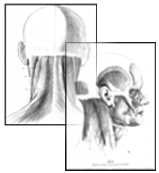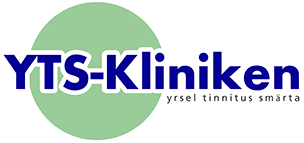
Headaches are something that affects most people now and then – and are usually harmless – but still bothersome. Headache as a symptom can be due to fluid deficiency, virus with fever but often as tension headache which can be localized to the temples, forehead and neck. It is not uncommon, at the same time, experience fatigue in the jaws and shoulders. It is extremely rare that headaches are due to something alarming. If you experience acute headaches that you cannot find a natural cause for, it is recommended that you contact the health care service to determine a diagnosis.
Different Types of Headaches
Migraine
The word migraine comes from Greek E ἡμικρανία (hemicrania), half the head. The headache can be intense with pain experiences coming from the neck and spreading across the head to the eye or from the neck forward over the ear to the temples. The intense headaches can be single-sided or double-sided and vary between the sides. It can occur in the form of aura and include light sensitivity and sound sensitivity. Migraine headaches can be triggered by stress, exertion and during menstruation. In more severe cases, the pain can result in nausea and vomiting.
A probable cause is irritation of the nerve “Occipitalis” that runs through the neck muscles over the head. During stress, increases tension in the neck. The neck tension are most often due to tooth pressing and tension in the shoulders.
Tension Headaches
Headaches related to tension are often due to muscle tension in the face, jaws and neck / shoulders. Tension caused by tooth clenching/grinding, tongue clenching and frequent facial expression. Tension causes asphyxia in the muscles which leads to stiffness and pain. Headaches related to tension can be recognized by the temples feeling sore, the neck feels stiff and fatigue feeling in the jaw muscles. The jaw muscles get tired during chewing. The headaches can be localized to temples, neck, crone and forehead. Experienced as an ant-creeping sensation over the head, the experience of wearing a tight cap, a strap around the head, or as the head is squashed. Also a feeling, being generally stiff in the neck and shoulders.
Lighter headaches can be medicated using nonprescription painkillers such as paracetamol. With the help of massage and stretching, the headaches can be relieved. It is important to make yourself aware of activities in everyday life that can lead to tension. It can be ergonomics or tension in connection with concentration. If the muscle tension is caused by emotional stress, you may need guidance to make a change. Initial guidance can be found in our help for self-help.
Hortons Headache
Horton’s headache often gives symptoms such as an intense one-sided headache around an eye and the feeling that the eye should pop out. It often gets worse laying down but the pain is often short-lived – although still painful. You may also have symptoms in the form of nasal congestion or dripping nose, sweating face. Some also become nauseated and vomit. It is not entirely clear what caused Horton’s headache, but stress and drugs are said to be some of the causes.
Pharmaceutical Effected Headache
Do you often medicate paracetamol or ibuprofen when experience headache? Try to avoid these pain killers for some time and see if it have some positive effect. It may be that you happen to end up in a vicious circle when use these tablets. A side effect is actually an increase of headache in high consumption. While you avoid pain killers try to reduce stress factors to lower your tension. You may also need a bite guard. In our “help for self-help” you get guidance to identify if your headache is stress related and how to avoid tension. – Read more about our treatment here.

